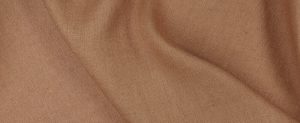FS Colour Series: Honey Blossom Inspired by Jean Honore Fragonard’s Flirtatious Pink
HONEY BLOSSOM Linen’s sumptuous pink flutters through Jean-Honore Fragonard’s decadent Rococo scenes, tinting ruffled skirts, diaphanous veils and the blushing cheeks of hopeful young suitors. Nestled amongst cool, watery greens and dusty blues, this colour brings the fresh, peachy glow of spring and summer into his works of art. But it also symbolises the blossoming of new love between flirtatious youngsters on the brink of adulthood, encapsulating the playful freedom of spirit that defined the Rococo era.
Fragonard was born into a creative family of artisans based in Grasse in 1732, but they later relocated to Paris when the artist was just six years old. As an adolescent Fragonard trained under two of Paris’ most esteemed painters of the burgeoning Rococo era – Jean-Baptiste-Simeon Chardin and Francois Boucher. From both he learned how to create complex narrative scenes with dramatic theatrical lighting and luminous pastel colours. In 1752 Fragonard won the prestigious Prix de Rome, before training as a history painter at the Ecole Royale des Eleves Proteges in Paris.
Psyche showing her Sisters her Gifts from Cupid, 1753 was painted during this period of training in Paris and demonstrates both the artist’s exquisite painting skills and his emphasis on classical subject matter, illustrating an episode from the story of Cupid and Psyche. Made for King Louis XV at Versailles, the painting also reveals French fashions for decadence and excess, with rippling fabrics flowing sensuously across dynamically arranged figures. Soft pinks spread out across the foreground with the ripe juiciness of a summer peach, a colour echoed in the skin of angelic cherubs and flapping drapery overhead.
The Goddess Aurora Triumphing Over Night, 1755-1756 also illustrates classical themes, as Aurora, goddess of dawn and bringer of early light swoops across the sky, bringing with her a glowing, ethereal light and sending darkness below into a deep sleep. Peachy pink drapes sweep around her torso and flap wildly across the sky, a potent symbol of her free-spirited innocence, while blossoming flowers in the same shade of pink bloom all around her, representing her role as the giver of life.
With support from the French Academy, Fragonard was able to further his study of history painting with five years studying art in Rome. On his return to Paris, the French Academy elected Fragonard as a full member, in the hope that he would become one of the country’s finest history painters, but Fragonard had other ideas. Instead, he chose to focus on light-hearted scenes that captured the flirtatious spirit of the Rococo era, with young lovers teasing or pursuing one another in amongst lush, decadent surroundings; the garden was a popular motif for symbolising eroticised fantasy in 18th century painting, with blossoming flowers signalling the blooming of sexuality.
Perhaps the most famous painting of the entire Rococo period, Fragonard’s cheeky and playful work The Swing, 1767, captures a flamboyant young woman confidently asserting her freedom to experiment with life. Amidst a dark green overgrown forest, she swings back and forth with frothy weightlessness, her ruffling, peach-tinged dress illuminating the scene with a radiant, youthful glow. From behind a man, possibly her husband, pushes her forward, while in front she hides a secret admirer in the bushes, gazing down at him from above as if celebrating her awakening sexual power.
The Progress of Love: Love Letters, 1771-1772, explores themes of courtship and romance in a more understated and traditional manner. The work was made as one of a four-part series exploring the stages of romantic union in a young couple from pursuit, to meeting, commitment and friendship. In Love Letters the pair appear to have reached a point of security, as she re-reads old love letters in reminiscence and he gazes adoringly at his wife, while a spaniel at their feet signals fidelity. Warm, pastel pinks in flower petals and the young woman’s dress suggest the fresh lightness of early summer, a fitting metaphor for the contended stage of happiness in the young couple’s life.



































































Leave a comment